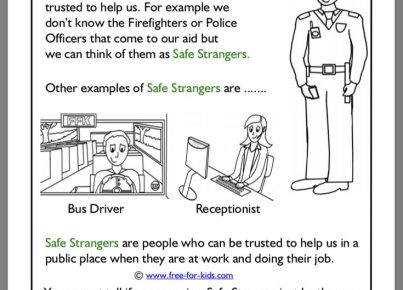Introduction
The great outdoors offers endless opportunities to enhance learning experiences, break the monotony of everyday classroom routines, and engage students in ways not possible within four walls. This article explores 30 ways educators can adapt their lessons for the great outdoors and revolutionize the way students approach learning.
1. Nature Scavenger Hunts: Have students search for specific items found in nature, such as leaves, rocks, or animal tracks.
2. Outdoor Math Challenges: Set up outdoor math stations or obstacle courses that incorporate problem-solving and teamwork.
3. GPS Orienteering: Give students coordinates and have them find their way using GPS technology.
4. Habitat Explorations: Delve into local ecosystems and study the plants and animals living there.
5. Art in Nature: Use natural materials found outside to create various art projects.
6. Nature Journaling: Have students document their observations of flora and fauna through drawings or written entries.
7. Outdoor Science Labs: Conduct experiments outdoors to demonstrate concepts taught in science classes.
8. Community Gardening: Collaborate with local organizations to establish a garden that teaches about sustainable agriculture.
9. History Hikes: Visit historical sites or create your own walking tours to learn about local history.
10. Environmental Stewardship Projects: Plan activities that promote environmental awareness and conservation efforts, such as tree planting or litter cleanups.
11. Outdoor Theater Performances: Encourage drama students to perform plays outside, making use of a natural setting as their stage.
12. Photography Expeditions: Develop students’ photography skills and encourage an appreciation for nature through outdoor shoots.
13. Bird Watching Adventures: Teach students about avian species by observing them in their natural habitats.
14. Nature Poetry Sessions: Encourage creative writing by having students compose nature-inspired poetry outside.
15. Sandcastle Contests: Combine STEM and art concepts by challenging students to construct sand sculptures at a nearby beach.
16. Geocaching Activities: Have students participate in GPS-based treasure hunts or create their own geocache.
17. Star Gazing Sessions: Organize a nighttime field trip to explore constellations and astronomy concepts.
18. Physical Education in the Park: Liven up PE classes with outdoor games that take advantage of the open space.
19. Outdoor Meditation and Yoga: Introduce mindfulness practices outdoors for a tranquil learning experience.
20. Mapping Routes: Teach students about topography by having them map their own routes on local trails.
21. Solar Cooking: Construct solar ovens and have students cook meals using solar energy.
22. Rainwater Harvesting Lessons: Teach students about water conservation through building rainwater collection systems.
23. Composting Projects: Set up composting bins to expose students to sustainable waste management practices.
24. Weather Monitoring Stations: Have students monitor various meteorological conditions by setting up weather stations outdoors.
25. Insect Hunt Expeditions: Explore the world of insects in a hands-on, investigative manner by searching for them outdoors.
26. Water Testing Activities: Collect samples of water from various sources and teach water quality analysis techniques.
27. Survival Skills Course: Educate students on essential outdoor survival skills, such as building a fire or constructing shelters.
28. Sound Mapping Walks: Enhance listening skills by identifying different sounds found in nature during organized outdoor walks.
29. Tree Identification Hikes: Encourage biodiversity awareness through tree identification activities on nature hikes.
30. Outdoor Reflection Sessions: Provide opportunities for students to discuss and reflect on their experiences outside the classroom after each activity.
Conclusion
Embracing the great outdoors as an extension of your classroom brings a wealth of benefits to students’ learning experiences. By incorporating these





